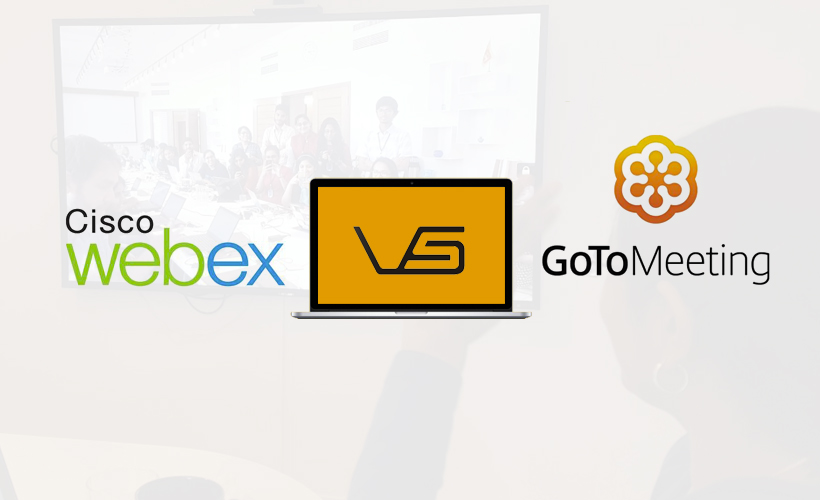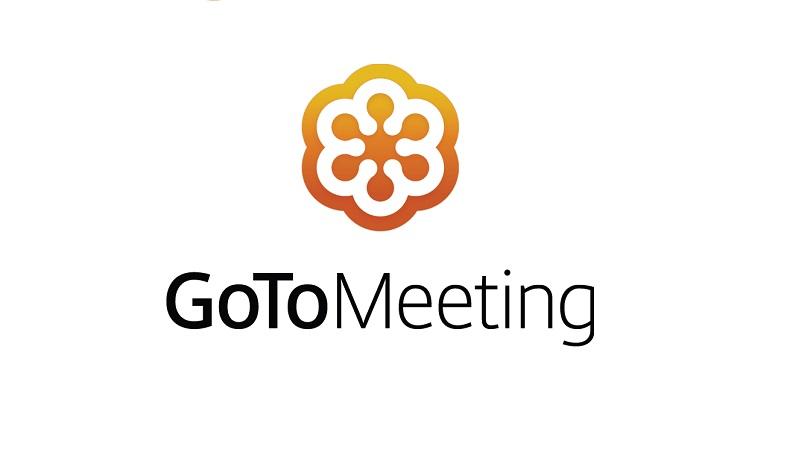
If you’re reading this article chances are you’re familiar with virtual meeting software or at least somewhat curious. Maybe you’ve read about it, or maybe you know someone who’s company uses it. The virtual conferencing space market is expected to exceed $11 billion by 2023, so you’re certainly not alone in your curiosity.
And if you’ve been looking into virtual meeting software you’ve undoubtedly heard of WebEx and GoToMeeting. They’re two of the leaders in the industry and both can make handling remote business more efficient and effective.
But like everything else, not all video conference software will work for everyone. There are subtle differences that set apart these two vendors, and knowing these differences can go a long way in ensuring that you’re choosing the right vendor for your unique situation.
So today, we’re breaking down the differences between WebEx and GoToMeeting to help give you more insight into the world of video conferencing software.
Why Do I Need Conferencing Software?
Before we examine each software separately, it’s important to understand exactly what conferencing software brings to the table. Summed up, it allows for effective communication over long distances.
In more detail…
Virtual meeting software has taken the business world by storm, and for good reason. While the internet has helped our world become more interconnected, it’s software like WebEx and GoToMeeting that actually facilitate the connection.
The ability to have fast, on-demand communication with people anywhere, anytime, and any place is pushing our globalization at an astounding rate. The applications extend to both employees and employers, as well as clients.
Team members working away from the office (or on the other side of the world) can communicate and participate in full meetings that feature just as much interaction as face-to-face conferencing. People can talk, share files and screens, draw and more, all from apps like WebEx and GoToMeeting.
It’s efficient and effective communication that’s allowing companies to save money on office space and traditional hiring methods and instead turn towards the work from home crowd. In 2016, 43 percent of employed Americans said they spent time working from home.
Without effective telecommuting software, that number wouldn’t have been possible. Working from home can reduce stress, and happy, relaxed employees are productive employees.
Beyond employees, meeting software also allows for tighter integration with clients located in other markets. Video conferencing can help put together an interactive sales pitch that’s not possible over the phone.
The exact software you’ll need for your business to reap all of these benefits will depend on your unique wants and needs. Let’s look at WebEx and GoToMeeting to help make your decision a little easier.
WebEx

We’re starting first with WebEx. It’s a vaunted name in conferencing and the go-to for much of the corporate world. Here’s why you should keep it on your radar.
History
WebEx was one of the first video conference apps on the scene, meaning they’ve had years and years to perfect their platform, adding and removing features as businesses’ needs evolved.
Founded in 1996 and acquired by Cisco in 2007, WebEx has the backing of one of the world’s largest communications brands. When it comes to staying on the bleeding edge, you won’t find a company with more resources than WebEx.
Video Conferencing
Video conferencing is a crucial part of any meeting app. It’s the basic thing that separates conferencing from telephone calls. From video quality, to plugins and more, without a strong video component, no conferencing app could survive.
WebEx keeps video simple, allowing calls with or without video at the push of a button. Different tiers of the program offer more video feeds than others, with the “premium” tier offering the most simultaneous feeds. For business purposes the paid version is mandatory.
Starting a meeting means creating a personal meeting room with its own URL. You can share that URL with others, or invite them by email or through programs you’re currently using, for instance, Microsoft Office.
Your invitees can then decide to join via VoIP, a toll-free number (no video), natively through the WebEx app, or through an integrated third-party app like Skype. The support for third-party systems gives WebEx the advantage of supporting people not using the WebEx app itself.
Collaboration
Beyond simple video, WebEx packs in other features that make video calling more akin to a face-to-face meeting. Things like screen sharing allow you to mimic a real-world meeting setting. Your screen functions like a whiteboard during an in-person presentation.
Also included in the list of features is a markup tool to further simulate drawing on a whiteboard, instant messaging within video calls, event hosting, meeting recording, and file sharing where attendees can actually download the files in question.
Price
WebEx is available in different editions – one free and three paid, or “premium.” All paid versions offer the ability to have ever-increasing numbers of meeting attendees. The paid version starts at $14.95 per month and rises to $29.95 per month. Enterprise solutions are available on a case-by-case basis.
GoToMeeting

The WebEx alternative, GoToMeeting, is the relative newcomer in the video conferencing space. It takes a familiar approach while prioritizing certain things to help stand out from the competition.
History
GoToMeeting started in 2004 with the backing of enterprise software vendor Citrix. Today the program is part of the Citrix suite which includes other “GoTo” products. The integration makes the platform attractive to those willing to buy into the suite.
Having a limited history, when compared to WebEx, means GoToMeeting had to adopt different strategies to break into the market. They’re relying less on brand recognition (though today they’re well known) and more on creativity.
Video Conferencing
GoToMeeting also offers the ability to switch between audio and video calling at the push of a button. Users can invite attendees in a variety of ways, including URLs, email, and third-party app integration. All in all, it’s very similar to WebEx in this sense.
What’s missing is the deeper integration into other video calling apps. You can still use Skype to call into conferences with GoToMeeting, but the options for other video apps are limited when compared to WebEx.
Also lacking is the number of video feeds. While WebEx offers seven simultaneous feeds with its top-paid version, GoToMeeting offers only six simultaneous feeds. It’s a limiting factor that could seriously push you firmly into WebEx’s court.
However, what GoToMeeting does have over WebEx is better video quality. GoToMeeting offers 640x480p video quality over each stream, limited of course by hardware and bandwidth restrictions.
Collaboration
Collaboration features are fairly standard with GoToMeeting. The program offers screen sharing, shared keyboard and mouse control (good for training purposes), markup tools, instant messaging, file sharing (though view only), and events.
The real stand out is the mouse and keyboard control, something that WebEx lacks. It’s especially handy when you’re trying to direct an attendee and words aren’t making an impact.
Price
Like WebEx, GoToMeeting is available in different tiers. Prices start at $19.00 per month and rise to $49.00 per month for the highest tier. As you go higher in the tiers you gain access to more participants and features.
Any business should always opt for the top paid tier. It’s worth the money.
So Which Program is Best?
That would depend on your wants and needs. The two programs are very similar, with WebEx having more simultaneous video feeds and a lower price, and GoToMeeting offering better video quality and mouse/keyboard control.
Both are excellent options for internet conferencing, and the ultimate choice lies with you. Whichever you choose, you’ll still reap the benefits of web conferencing.